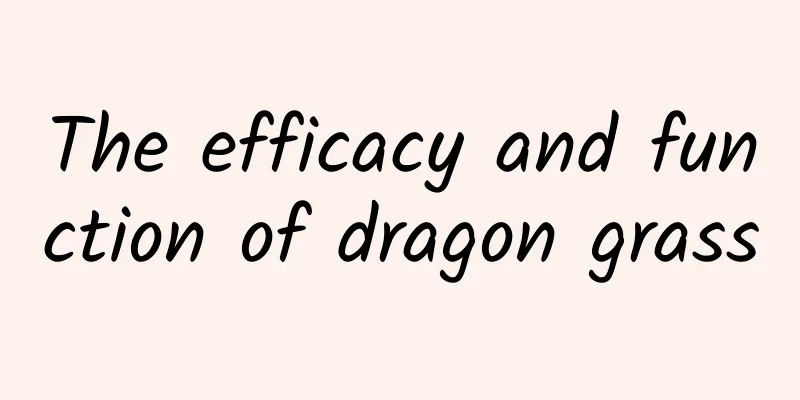The efficacy and function of silky plum

|
Traditional Chinese medicine has a history of thousands of years. It has appeared at a very early time, and it has very satisfactory effects on the treatment of diseases. There are many types of traditional Chinese medicine. Do you know the medicinal material "Silk-spotted Plum"? [Other names] Primrose, Throat Grass, Primrose [Source] Medicinal material source: the whole herb of Primulaceae, a plant of the Primulaceae family. [Original form] Annual herb. The whole plant is almost hairless or partially ciliated. The taproot is not well developed and has many fibrous roots. Rosette leaves solitary, 2-8 cm in diameter; petiole slender, equal to or slightly longer than leaf blade; leaf blade oblong to ovate-oblong, 6-25 mm long, obtuse or slightly acute at apex, short and gradually narrow at base, with sparse small teeth on margin, glabrous. The pedicels are usually 3 to more than 10,000 in number, emerging from the leaf clusters, 2.5-15 cm high, glabrous or with only sparse, short glandular hairs on the upper part; the umbels are many-flowered; the bracts are linear-lanceolate, about 2 mm long; the pedicels are filiform, of varying lengths, 2-7 cm long; the calyx is cup-shaped, 2-2.5 mm long, 5-partite, and the division reaches about the middle, the lobes are triangular, with acute tips and extremely narrow membranous margins, glabrous or sometimes sparsely covered with glandular hairs; the corolla is white, about 3 mm in diameter, the tube is slightly shorter than the calyx, 5-lobed, and the lobes are oblong; the stamens are borne in the corolla tube, the filaments are about 0.4 mm long, the anthers are oblong-triangular, about 0.3 mm long, and the ovary is spherical. The capsule is nearly spherical, about 2mm in diameter, with a nearly membranous pericarp, covered with a persistent corolla, and 5-valved. The seeds are small, numerous, brown, nearly oblong, about 0.3mm in diameter, and have a reticulated seed coat. The flowering period is from May to June, and the fruiting period is from June to September. [Habitat distribution] Ecological environment: Grown in moist grasslands, under forests or beside ditches at an altitude of 1000-2000m. [Properties] Identification of properties: The whole plant is wrinkled, the leaves are clustered in rosettes, mostly wrinkled, and the complete leaves are oblong to ovate-oblong when flattened, 0.6-2.5cm long, obtuse or slightly acute at the apex, gradually narrowed at the base, with sparse small teeth on the edge, glabrous, and light yellow; the petiole is slender, equal to or slightly longer than the leaf blade. The peduncle is slender, yellow to red, and covered with short glandular hairs on the upper part; the umbel is multi-flowered; the small flowers are light yellow. Slight odor, light taste. 【Nature and flavor】 Bitter; pungent; cold 【Functions and indications】 Clears away heat and detoxifies; reduces swelling and relieves pain. Sore throat, mouth ulcer, toothache, conjunctivitis, hemiplegia, swelling and pain from falls [Usage and Dosage] For oral use: decoction, 9-30g. 【Excerpt】 Chinese Materia Medica The above introduces some common knowledge about the silky groundsweet. In order to make more people understand the silky groundsweet, you can accumulate more related things in your daily life, which will play an important role in maintaining our health. |
<<: The efficacy and function of single kidney grass
>>: The efficacy and function of four square grass
Recommend
The efficacy and function of polyalgae
Traditional Chinese medicine is very effective in...
Does Xiatare Tablets contain hormones?
Baixuan Xiatare Tablets are made of imported Sica...
Effect of Polygonum multiflorum on treating alopecia areata
The increase in pressure now makes it impossible ...
The efficacy and function of Epingcao
The traditional Chinese medicine Epingcao is ofte...
What is the medicinal value of chestnut shells
Chestnuts are food we often eat. Many people like...
Medicinal Value of Plantain
Plantain is a common Chinese herbal medicine. We ...
Scientists have found the gene that controls fish bones, making it possible to eat fish without picking bones
There are often such troubles in life Crucian car...
Can licorice help you lose weight?
The best use of licorice is its medical role. If ...
The efficacy and function of Shuangshen Ginseng
Ginseng has a long history, and up to now, its us...
More than 20 years of hard work and perseverance, moving forward on a new journey of popular science
On December 25, 2024, the 13th session of the Sta...
The aircraft carrier that made everyone proud became his farewell gift...
China's first generation carrier-based fighte...
Anti-inflammation: the key to slowing down aging?
Produced by: Science Popularization China Author:...
Do insects have emotions?
© BBC/Alamy Leviathan Press: Personally, the ques...
What are the effects and functions of purple betel nut
Purple clam teeth are actually what we call Wenbe...
ComScore: 50% of Americans used mobile apps for entertainment in 2014
Mobile is quickly becoming the primary platform f...









